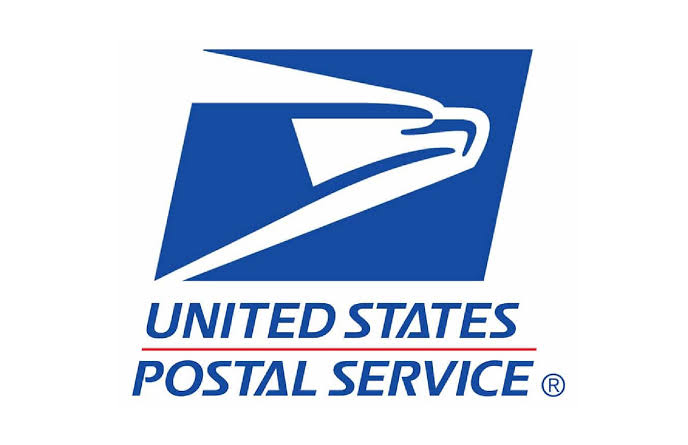Table of Contents
How to Avoid USPS Scam Texts: Protect Yourself from Phishing and Fraudulent Messages
How to Avoid USPS Scam Texts: In today’s fast-paced digital world, communication has become incredibly convenient. We can receive updates, notifications, and alerts via text messages in real-time. Unfortunately, this also creates an opportunity for scammers to exploit people using fraudulent text messages that seem legitimate. One such scam involves fake text messages claiming to be from the United States Postal Service (USPS).
These scam texts often inform you about supposed issues with package deliveries or ask for personal information, luring unsuspecting victims into dangerous traps. Falling for such scams can result in identity theft, financial losses, or even more serious long-term consequences. However, by learning how to identify and avoid USPS scam texts, you can safeguard yourself against these risks. In this article, we’ll explore what USPS scam texts are, how to recognize them, and steps you can take to protect yourself.
Understanding USPS Scam Texts
USPS scam texts are a type of phishing attack where scammers pose as the postal service to deceive recipients. The messages often claim that there is an issue with a delivery, such as a delayed or missed package, and provide a link or phone number to resolve the problem. The ultimate goal is to trick you into providing sensitive information like your personal details, passwords, or credit card numbers. In some cases, the scam may even install malware on your device if you click on suspicious links.
USPS scams typically leverage urgency, making the message seem time-sensitive so that the recipient is more likely to respond without careful thought. Scammers often use official-looking logos or formats to make the message appear authentic, further fooling individuals who may not realize they are being targeted.
Common Tactics Used in USPS Scam Texts
There are several tactics scammers employ when crafting USPS scam texts. Some of the most common ones include:
1. Claiming a Package is Delayed or Missing: The text might say that your package is waiting for you to claim or that it’s being held due to an error. The message urges you to act quickly by clicking a link or contacting a phone number.
2. Offering a Fake Prize or Delivery Notification: You may receive a message claiming that you’ve won a gift or that a package you didn’t expect is on its way. This tactic is designed to spark excitement or curiosity, making you more likely to engage with the message.
3. Spoofing Legitimate USPS Alerts: Scammers often use language that closely mirrors real USPS notifications, such as “Delivery Notice” or “Package Confirmation Required.” They may also use familiar USPS terminology, making the scam more convincing.
4. Requesting Personal Information or Payment: The text might ask you to confirm personal details such as your name, address, or Social Security number. It may also request a small payment to release your package, often asking for credit card information or bank account details.
5. Creating a Sense of Urgency: Many scam texts are designed to make you feel that you must act immediately. The message might say that your package will be returned to the sender if you don’t respond within 24 hours or that your delivery requires an immediate update.
How to Identify USPS Scam Texts
Spotting a USPS scam text can be challenging because scammers are skilled at making their messages look legitimate. However, several red flags can help you identify a potential scam:
1. Check the Sender’s Number: USPS messages typically come from shortcodes (like 28777 or similar) rather than random or unfamiliar phone numbers. If the text comes from a long or suspicious-looking number, it’s a sign that the message might be a scam.
2. Look for Poor Grammar or Spelling Mistakes: Scam texts often contain typos, unusual grammar, or awkward phrasing. Legitimate USPS notifications are professional and free from these kinds of errors.
3. Unsolicited Delivery Messages: If you haven’t ordered anything or aren’t expecting a package, be skeptical of any delivery notifications. Scammers rely on you believing that you’ve missed a delivery or that a package is on its way.
4. Verify the Link: Don’t click on any links without verifying them first. Hover over the link (or press and hold on mobile) to see the actual URL. Legitimate USPS URLs will include “usps.com.” If the link leads to a strange or unfamiliar site, don’t click it.
5. Request for Sensitive Information: USPS will never ask for sensitive personal information like your Social Security number, bank account details, or credit card number via text. If the message asks for this kind of information, it’s a scam.
6. Too Good to Be True: If the message offers something that seems too good to be true, such as an unexpected prize or a delivery you didn’t order, it’s likely a scam.
Steps to Take If You Receive a USPS Scam Text
If you receive a suspicious text message claiming to be from USPS, there are several steps you can take to protect yourself:
1. Do Not Click on Links or Respond: The most important thing to do when you receive a scam text is to avoid clicking any links or responding to the message. By engaging with the message, you risk exposing your personal information or downloading malware onto your device.
2. Report the Scam: You can report suspicious texts to the USPS by forwarding the message to 7726 (SPAM) or reporting it to the USPS directly through their website. This helps the postal service track and shut down fraudulent schemes.
3. Block the Sender: On your mobile device, block the sender’s number to prevent them from contacting you again. While this won’t stop other scam texts from different numbers, it’s a good step to protect yourself.
4. Verify the Information: If you are unsure whether the message is legitimate, don’t use the contact information provided in the text. Instead, visit the official USPS website or use their official app to check the status of any deliveries. You can also contact USPS customer service directly to verify the authenticity of the message.
5. Delete the Message: Once you’ve reported and blocked the scam text, delete the message from your phone. Keeping it on your device could increase the risk of accidentally clicking on the link later.
How USPS Handles Legitimate Notifications
To further safeguard yourself, it’s helpful to understand how USPS sends legitimate notifications. USPS does offer text and email alerts for package tracking, but these services are opt-in, meaning you must sign up for them. If you haven’t signed up for USPS Informed Delivery or requested package tracking updates, you won’t receive legitimate USPS texts out of the blue.
Additionally, USPS will never ask for personal information, payments, or sensitive details through text or email. Legitimate USPS communications are for informational purposes only, such as providing tracking updates or letting you know a package is out for delivery.
If you’ve signed up for text updates, USPS will send alerts using shortcodes or recognizable email domains (like “usps.com”). Always double-check the source of the message before engaging.
Stay Informed and Educated
Scammers are constantly coming up with new ways to trick people, so it’s crucial to stay informed about the latest tactics and be cautious when receiving unsolicited messages. By knowing what to look for and how to respond, you can avoid falling victim to USPS scam texts.
To stay one step ahead of scammers, consider taking these proactive measures:
– Educate yourself and others: Share what you’ve learned about USPS scam texts with friends and family. The more people who are aware of the scam, the less likely they are to fall for it.
– Use robust security features: Enable two-factor authentication (2FA) on your phone and email accounts to add an extra layer of protection. This can help prevent scammers from accessing your accounts even if they obtain your login information.
– Install antivirus software: Keep your device secure by using antivirus software to detect and block potential threats, including malware and phishing attempts.
Conclusion
USPS scam texts are a growing problem, but by staying vigilant and following best practices, you can avoid falling victim to these fraudulent schemes. Recognizing the warning signs of scam texts, reporting suspicious messages, and protecting your personal information will help keep you safe from scammers. Always remember: if something seems suspicious, trust your instincts and take steps to verify the message before responding.


